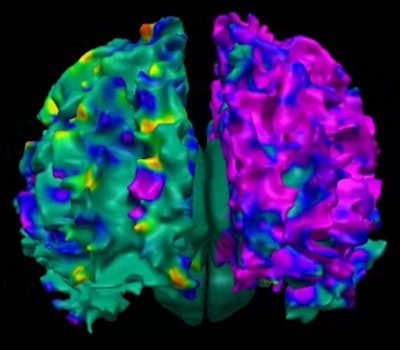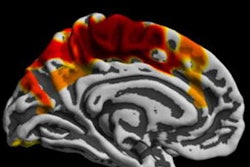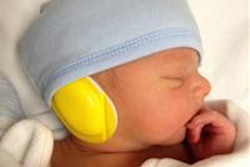
MRI has shown reduced white matter in the brains of children who were exposed to toxic air pollution while in utero. This reduction may have led to behavioral and cognitive problems in the first seven to nine years of their lives, according to an article published online March 25 in JAMA Psychiatry.
The researchers from Children's Hospital Los Angeles suggest that these toxic pollutants, known as polycyclic aromatic hydrocarbons (PAHs), cause slower processing speed and behavioral conditions such as attention deficit/hyperactivity disorder (ADHD). PAHs come from a variety of sources, including vehicle emissions, oil- and coal-burning facilities, smoking, waste incineration, and space heaters.
 Dr. Bradley Peterson from Children's Hospital Los Angeles.
Dr. Bradley Peterson from Children's Hospital Los Angeles."To our knowledge, this is the largest MR imaging study of the brain effects of exposure to PAH air pollutants and the first to report effects from prenatal exposure," wrote lead author Dr. Bradley Peterson, director of the Institute for the Developing Mind at the hospital, and colleagues (JAMA Psychiatry, March 25, 2015).
The study included 40 minority urban school-aged children born to Latin (Dominican) or African-American women in New York City. The children were selected from a pool of 255 subjects with a full range of prenatal PAH exposure levels, as well as no or very low prenatal exposure to environmental tobacco smoke or certain other chemicals.
Twenty subjects were randomly selected from a group of children above the median PAH level, while 20 were picked from a group below the median PAH level. All 40 participants were followed from their fetal period to 7 to 9 years of age. Their mothers completed prenatal PAH monitoring and questionnaires.
The MRI scans showed a relationship between increased prenatal PAH exposure, as measured in a child's third trimester, and reductions in white matter in the child's later years. The reductions were confined almost exclusively to the left hemisphere of the brain and involved almost its entire surface.
 MRI showed the effects of PAH on the developing brain. Image courtesy of the Saban Research Institute of Children's Hospital Los Angeles.
MRI showed the effects of PAH on the developing brain. Image courtesy of the Saban Research Institute of Children's Hospital Los Angeles.Reduced white-matter surface on the left side of the brain was associated with slower processing during intelligence testing and behavioral issues, including ADHD symptoms and conduct disorder problems, the authors noted. They postulated that PAH exposure could be altering brain development by influencing neurochemical pathways in the left hemisphere.
Early intervention
Based on the results, Peterson and colleagues recommended that clinicians educate prospective parents, especially early in the pregnancy, about the risks associated with PAH in terms of brain development and later behavior. Mothers should be urged to avoid exposure to smoke, exhaust, and other sources of PAH as much as possible.
"If you think about the number of people who are exposed to these compounds, because they are everywhere in the environment to some degree, cumulatively across the population it has to have an enormous effect on the rates of ADHD and other behavioral problems and cognitive problems," Peterson said.
The group plans to continue the research to better understand the nature of the white-matter abnormalities associated with PAH.
"There are other modalities for imaging that can help us do that," he said. "Diffusion-tensor [MR] imaging is one that will help us understand better the nature of cellular and structural problems that we've seen. That's probably the first order of business."



.fFmgij6Hin.png?auto=compress%2Cformat&fit=crop&h=100&q=70&w=100)




.fFmgij6Hin.png?auto=compress%2Cformat&fit=crop&h=167&q=70&w=250)











